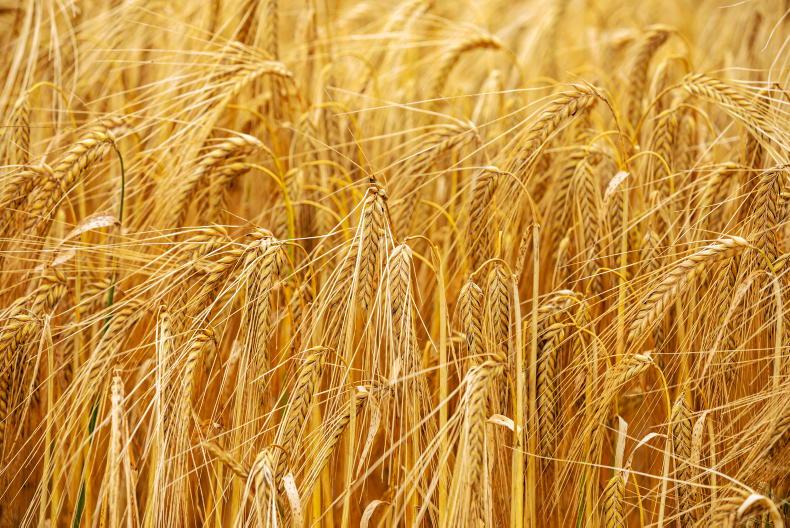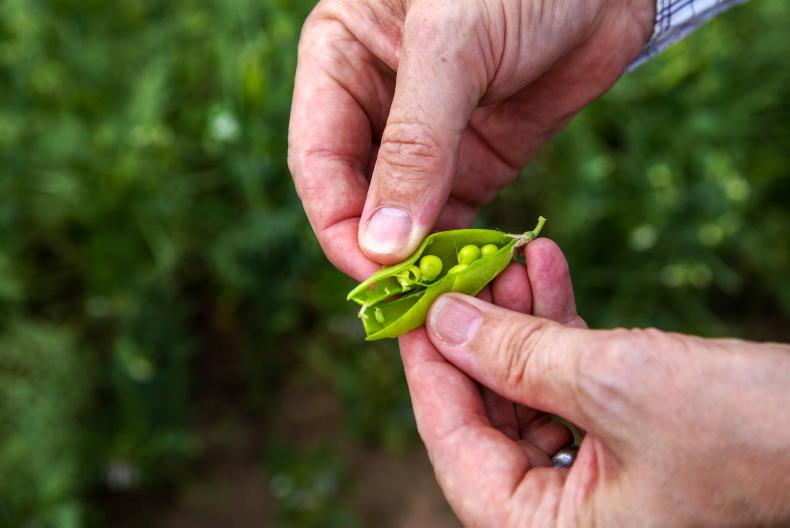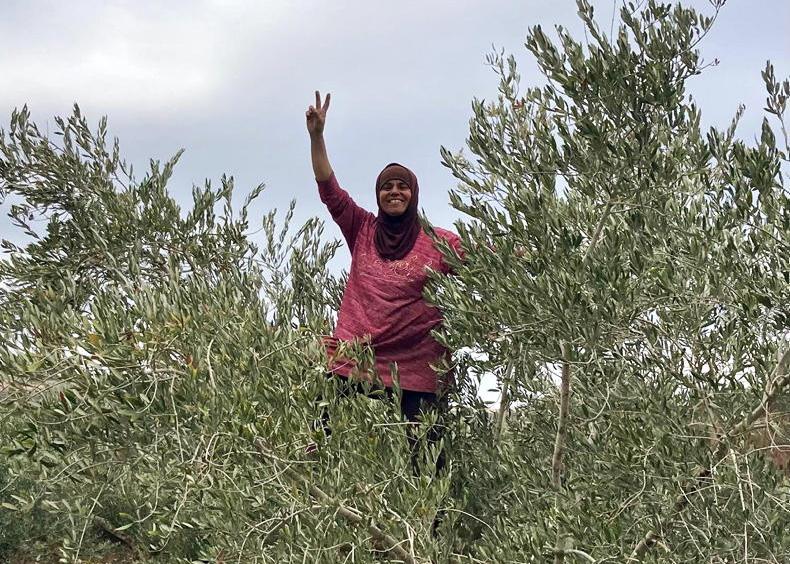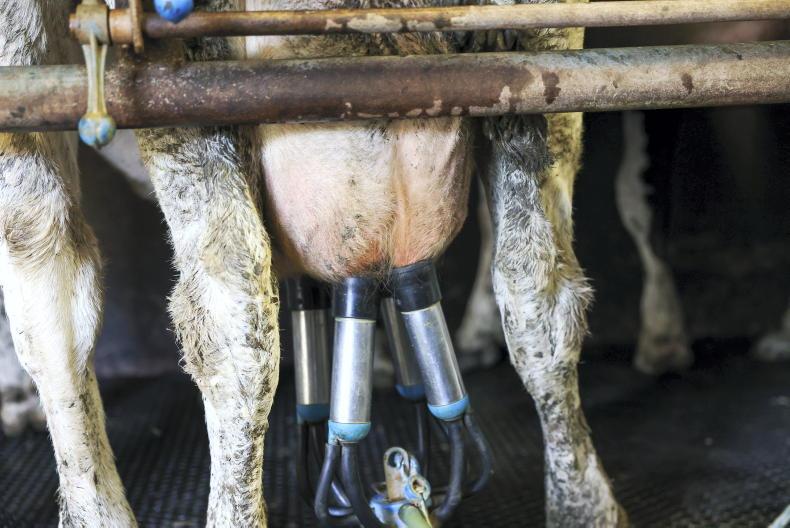Plant-based protein is a trend that does not appear to be going away. It is one that Ireland should be making the most of. After all, we produce some of the highest crop yields in the world.
However, for a country which produces such high yields, we are seeing our tillage area decline and we are becoming dependent on imported produce.
We no longer produce flour on any sort of substantial level, for example. We once produced milling wheat and peas on a large scale for consumption here on the island.
Researchers at UCD, Teagasc and Ulster University are investigating the potential of different crops to provide a protein source and flour for human consumption. They are looking at traditional crops and seeing the potential of other crops like barley, which is commonly grown in Ireland, as a source of protein.
In this article, Lorraine Brennan, Fiona Doohan and Aoife O’Gorman of University College Dublin; Susanne Barth of Teagasc; and Trevor Cadden of Ulster University all explain the work that is happening under the Protein-I project and what might come of it.
A move from animal-based protein
With increased awareness of the environment, there is a desire from consumers to move towards a diet with lower levels of animal protein and, in particular, red meat.

Winter barley could prove to be a good source of fibre. \ Philip Doyle
Data from the Irish food consumption surveys show that animal protein contributes 63% to the total protein intake of Irish people, with plant protein accounting for 37%.
However, a wide range of foods contribute to plant protein intake, with the top contributors being bread, fruit and vegetables. There is huge scope to improve the nutritional quality and contribution of these and other foods to our total plant-protein intake.
In particular, enhancing the nutritional quality of cereals and legumes offers benefits of not only delivering protein, but also other key nutrients and fibre.
The project Protein-I brings together a multi-disciplinary team working across the food system to deliver solutions for protein diversification and to develop new value chains for crops in rural Ireland.
Markets for Irish
grains and legumes
A particular focus for the all-island project of Protein-I is the examination of further markets of Irish grains/legumes beyond the traditional feed, distilling and brewing markets.
The food ingredient and milling sector could be an excellent venue for increasing Ireland’s potential of producing plant protein for human nutrition, with enhanced health benefits.
There is scope to grow these sectors and associated regional circular bio-economies, given the fact that most flour currently used in Ireland is from non-indigenous crops.
Protein-I is exploring the potential of primary producers to sustainably produce crops for these sectors and for other food and feed sectors.
At the field level, the focus is on the impact of crop genotypes and environmentally sustainable inputs on the productivity of wheat, barley, rye, oats and peas.
For winter and spring wheats, we are conducting trials in UCD and Teagasc to assess varietal performance and the impact of bio-stimulants on crop yield
For winter and spring wheats, we are conducting trials in UCD and Teagasc to assess varietal performance and the impact of bio-stimulants on crop yield under reduced nitrogen inputs.
Spring wheat is particularly attractive, as it requires lower inputs compared to winter wheat and is a main flour used for bread-making.
Rye and oats
Rye is a crop with many potential benefits for both feed and food. Interestingly, rye is a rich source of dietary fibre for the human diet, and has been shown in pig-feeding trials in Teagasc Moorepark to be excellent in a pig diet too.
Winter rye is a minor crop in Ireland, but is favoured by bakers for mixing into sourdough breads.
In Protein-I, we are assessing the potential of this crop in Ireland, analysing the performance of a panel of winter rye varieties under reduced nitrogen and organic fertilisers at two different sites.

Winter rye is of interest to the Protein-I project. \ Donal O’ Leary
The demand for oat-based foods has exploded in recent years, and the EU Interreg project, HealthyOATs, is assessing the impact of reduced nitrogen on the performance of a panel of oat varieties, including traditional heritage varieties with unique nutritional profiles.
The Protein-I project is working with the Healthy-OATS project to optimise the future exploitation of the outputs of these field trials.
Winter barley
Winter barley is a very successful crop in Ireland, but it is mainly produced for the feed market. Like oats, barley is rich in beta-glucans, which is a dietary fibre with major health benefits that include decreased blood sugar levels and cholesterol.
Beta-glucan is a highly heritable trait in barley and Protein-I aims to identify barley varieties with good agronomic traits and high beta-glucan levels to pave the way towards developing a food ingredient market for high beta-glucan winter barley.
Peas
Beyond cereals, we are also exploring the potential of peas as a crop in Ireland, assessing the performance of a panel of varieties under reduced nutrient inputs.
Legumes such as peas offer many benefits for sustainable agriculture; but they also present problems for farmers, including lodging.

Peas were grown in large quantities in Ireland for Bachelors in the past. The area planted now is much smaller at about 750ha. \ Claire Nash
Our initial UCD trials with peas and complementary trials with beans in Teagasc will help guide future legume research and the expansion of these crops in Ireland.
Working with nutritionists
Uniquely to the Protein-I project, we bring together crop scientists with human nutrition experts, and are conducting a series of studies to examine the health benefits of plant protein.
In particular, we are performing a Human Intervention study, where we will assess individuals’ current diet and deliver advice in terms of dietary goals to change their intakes to a more diversified protein intake.

Tirlán is carrying out a lot of research on oats and has successfully brought flours and drinks to the market.
By working at an individual level and diversifying intake, we aim to prove that the overall quality of the diet will improve, and that this in turn will have a positive impact on peoples’ health.
To achieve this, we are working with over 200 participants over the next two years to examine the impact of diversification of protein intake.
Consumers care about where their food comes from
Consumers not only want to shift their diets, they are also increasingly interested in the provenance of their food.
As we develop new value chains for crops in Ireland, we also need to consider new technologies that can confirm the provenance of downstream products.
Digitisation impacts
Furthermore, early effects of digitisation on the agri-food supply chain have been evaluated with reports of 11% time-saving, 10% output increase, 8% cost reduction and 8% higher environmental protection.
We need to consider new technologies that can confirm the provenance of downstream products
By harnessing these positive impacts of digitisation with an increased interest in provenance, the Protein-I project will develop a user-friendly, accessible and innovative supply-chain technology solution, capable of providing security, traceability, visibility and sustainability in an end-to-end fashion.
Our project addresses the weaknesses in current solutions by applying additional security, usability and confidentiality features, supported by smart environmental elements, such as near field communication and QR codes, to capture the data.
SMART technology
The SMART technology solution we are developing should provide secure, non-repudiative logging of movements/activities within a supply chain.
We have a unique opportunity where demands from consumers for a more sustainable healthy diet – married with SMART technology solutions and advanced knowledge of cropping systems in Ireland – opens up new possibilities for the farming community.
Results from Protein-I will play a key role in transforming our food system and ensuring farmers are central to this.
Plant-based protein is a trend that does not appear to be going away. It is one that Ireland should be making the most of. After all, we produce some of the highest crop yields in the world.
However, for a country which produces such high yields, we are seeing our tillage area decline and we are becoming dependent on imported produce.
We no longer produce flour on any sort of substantial level, for example. We once produced milling wheat and peas on a large scale for consumption here on the island.
Researchers at UCD, Teagasc and Ulster University are investigating the potential of different crops to provide a protein source and flour for human consumption. They are looking at traditional crops and seeing the potential of other crops like barley, which is commonly grown in Ireland, as a source of protein.
In this article, Lorraine Brennan, Fiona Doohan and Aoife O’Gorman of University College Dublin; Susanne Barth of Teagasc; and Trevor Cadden of Ulster University all explain the work that is happening under the Protein-I project and what might come of it.
A move from animal-based protein
With increased awareness of the environment, there is a desire from consumers to move towards a diet with lower levels of animal protein and, in particular, red meat.

Winter barley could prove to be a good source of fibre. \ Philip Doyle
Data from the Irish food consumption surveys show that animal protein contributes 63% to the total protein intake of Irish people, with plant protein accounting for 37%.
However, a wide range of foods contribute to plant protein intake, with the top contributors being bread, fruit and vegetables. There is huge scope to improve the nutritional quality and contribution of these and other foods to our total plant-protein intake.
In particular, enhancing the nutritional quality of cereals and legumes offers benefits of not only delivering protein, but also other key nutrients and fibre.
The project Protein-I brings together a multi-disciplinary team working across the food system to deliver solutions for protein diversification and to develop new value chains for crops in rural Ireland.
Markets for Irish
grains and legumes
A particular focus for the all-island project of Protein-I is the examination of further markets of Irish grains/legumes beyond the traditional feed, distilling and brewing markets.
The food ingredient and milling sector could be an excellent venue for increasing Ireland’s potential of producing plant protein for human nutrition, with enhanced health benefits.
There is scope to grow these sectors and associated regional circular bio-economies, given the fact that most flour currently used in Ireland is from non-indigenous crops.
Protein-I is exploring the potential of primary producers to sustainably produce crops for these sectors and for other food and feed sectors.
At the field level, the focus is on the impact of crop genotypes and environmentally sustainable inputs on the productivity of wheat, barley, rye, oats and peas.
For winter and spring wheats, we are conducting trials in UCD and Teagasc to assess varietal performance and the impact of bio-stimulants on crop yield
For winter and spring wheats, we are conducting trials in UCD and Teagasc to assess varietal performance and the impact of bio-stimulants on crop yield under reduced nitrogen inputs.
Spring wheat is particularly attractive, as it requires lower inputs compared to winter wheat and is a main flour used for bread-making.
Rye and oats
Rye is a crop with many potential benefits for both feed and food. Interestingly, rye is a rich source of dietary fibre for the human diet, and has been shown in pig-feeding trials in Teagasc Moorepark to be excellent in a pig diet too.
Winter rye is a minor crop in Ireland, but is favoured by bakers for mixing into sourdough breads.
In Protein-I, we are assessing the potential of this crop in Ireland, analysing the performance of a panel of winter rye varieties under reduced nitrogen and organic fertilisers at two different sites.

Winter rye is of interest to the Protein-I project. \ Donal O’ Leary
The demand for oat-based foods has exploded in recent years, and the EU Interreg project, HealthyOATs, is assessing the impact of reduced nitrogen on the performance of a panel of oat varieties, including traditional heritage varieties with unique nutritional profiles.
The Protein-I project is working with the Healthy-OATS project to optimise the future exploitation of the outputs of these field trials.
Winter barley
Winter barley is a very successful crop in Ireland, but it is mainly produced for the feed market. Like oats, barley is rich in beta-glucans, which is a dietary fibre with major health benefits that include decreased blood sugar levels and cholesterol.
Beta-glucan is a highly heritable trait in barley and Protein-I aims to identify barley varieties with good agronomic traits and high beta-glucan levels to pave the way towards developing a food ingredient market for high beta-glucan winter barley.
Peas
Beyond cereals, we are also exploring the potential of peas as a crop in Ireland, assessing the performance of a panel of varieties under reduced nutrient inputs.
Legumes such as peas offer many benefits for sustainable agriculture; but they also present problems for farmers, including lodging.

Peas were grown in large quantities in Ireland for Bachelors in the past. The area planted now is much smaller at about 750ha. \ Claire Nash
Our initial UCD trials with peas and complementary trials with beans in Teagasc will help guide future legume research and the expansion of these crops in Ireland.
Working with nutritionists
Uniquely to the Protein-I project, we bring together crop scientists with human nutrition experts, and are conducting a series of studies to examine the health benefits of plant protein.
In particular, we are performing a Human Intervention study, where we will assess individuals’ current diet and deliver advice in terms of dietary goals to change their intakes to a more diversified protein intake.

Tirlán is carrying out a lot of research on oats and has successfully brought flours and drinks to the market.
By working at an individual level and diversifying intake, we aim to prove that the overall quality of the diet will improve, and that this in turn will have a positive impact on peoples’ health.
To achieve this, we are working with over 200 participants over the next two years to examine the impact of diversification of protein intake.
Consumers care about where their food comes from
Consumers not only want to shift their diets, they are also increasingly interested in the provenance of their food.
As we develop new value chains for crops in Ireland, we also need to consider new technologies that can confirm the provenance of downstream products.
Digitisation impacts
Furthermore, early effects of digitisation on the agri-food supply chain have been evaluated with reports of 11% time-saving, 10% output increase, 8% cost reduction and 8% higher environmental protection.
We need to consider new technologies that can confirm the provenance of downstream products
By harnessing these positive impacts of digitisation with an increased interest in provenance, the Protein-I project will develop a user-friendly, accessible and innovative supply-chain technology solution, capable of providing security, traceability, visibility and sustainability in an end-to-end fashion.
Our project addresses the weaknesses in current solutions by applying additional security, usability and confidentiality features, supported by smart environmental elements, such as near field communication and QR codes, to capture the data.
SMART technology
The SMART technology solution we are developing should provide secure, non-repudiative logging of movements/activities within a supply chain.
We have a unique opportunity where demands from consumers for a more sustainable healthy diet – married with SMART technology solutions and advanced knowledge of cropping systems in Ireland – opens up new possibilities for the farming community.
Results from Protein-I will play a key role in transforming our food system and ensuring farmers are central to this.













SHARING OPTIONS